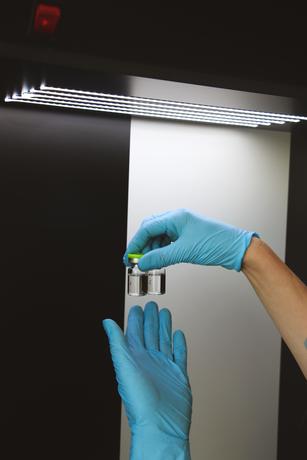Automated Visual inspection (AVI) machines are the backbone of quality assurance in pharmaceutical manufacturing, ensuring that every container or infusion bag meets the highest standards of safety, quality and compliance. Yet, even the most advanced systems can face technical hurdles, such as false rejects, missed defects, qualification headaches, that disrupt production and threaten regulatory compliance. At eyetec, our consultancy team, led by experts like Robin Van Mechelen and Wouter Donkers, specializes in diagnosing and solving these challenges for clients worldwide.
Why Automated Visual Inspection machines fail and how to fix them
AVI systems, are complex integrations of hardware, software, and process know-how. Common issues include:
- High false rejection rates: Machines may incorrectly flag good products as defective, leading to unnecessary waste and downtime (when optimizations are required).
- Missed defect detection: Critical defects like cracks, product mix-up, particulate matter or cosmetic defects, like scratches or dirt, can slip through if parameters aren’t optimized.
- Qualification and compliance gaps: Meeting GMP, EU Annex 1, and USP standards requires robust validation and documentation, which can be daunting during audits.
- Difficult-to-inspect products: Opaque, colored, or irregularly shaped containers often challenge both manual and automated systems.
eyetec’s Proven approach to troubleshooting
Our team’s troubleshooting process is rooted in deep technical expertise and hands-on experience across global markets:
-
Process analysis & optimization
Robin and Wouter begin by thoroughly analyzing the current inspection process, reviewing machine parameters, and identifying possible issues.
-
Recipe configuration & fine-tuning
In Africa, Robin configured and fine-tuned inspection “recipes”—the set of parameters that govern camera settings, rotation speeds, and defect thresholds. The goal: maximize sensitivity to real defects while minimizing false rejects.
-
Qualification support with realistic test sets
In the Nordics, eyetec’s defect sets, containing a range of typical flaws, were instrumental in validating an AVI system’s effectiveness. By simulating real-world defects, our team provided essential support, enabling the client to continue executing their qualification process.
-
Specialized strategies for difficult products
For complex cases like viscous products in syringes or flexible infusion bags, Robin and Wouter develop custom inspection strategies. This includes engineering runs to optimize parameters and, when needed, leveraging particle-seeded test samples to mimic challenging defect scenarios
Case Study: Tackling complex inspections
Robin and Wouter recently collaborated on a project in eastern Europe involving AVI systems for viscous syringe products, a notoriously difficult application. By fine-tuning system parameters and adapting inspection protocols, they enabled the client to achieve optimal defect detection without increasing false rejects, demonstrating eyetec’s expertise in handling even the toughest inspection challenges.
Also read our blog: eyetec’s Vision Engineer Robin: Tackling Visual Inspection challenges around the globe
The eyetec advantage
-
Lifecycle support: From initial process analysis to qualification support and continuous improvement during the lifecycle of inspection systems.
-
Regulatory alignment: Our solutions are always designed with GMP, EU Annex 1, and USP compliance in mind, giving QA managers peace of mind during audits.
-
Tailored consultancy: We don’t believe in one-size-fits-all. Each troubleshooting project is customized to the client’s product, process, and regulatory requirements.
-
Global reach, local expertise: With projects spanning Asia, Africa, North America and Europe, our consultancy team brings international best practices to every engagement.
Ready to troubleshoot your visual inspection machi
If your team is considering implementing AVI, starting with AVI, or is facing persistent issues with visual inspection or container closure integrity testing, eyetec’s consultancy team is ready to help. With decades of combined experience, Robin, Wouter, and the entire eyetec team deliver solutions that keep your production lines efficient, compliant, and audit ready.
Let’s get in touch and discuss your visual inspection challenges and discover how our experts can elevate your quality assurance processes.




